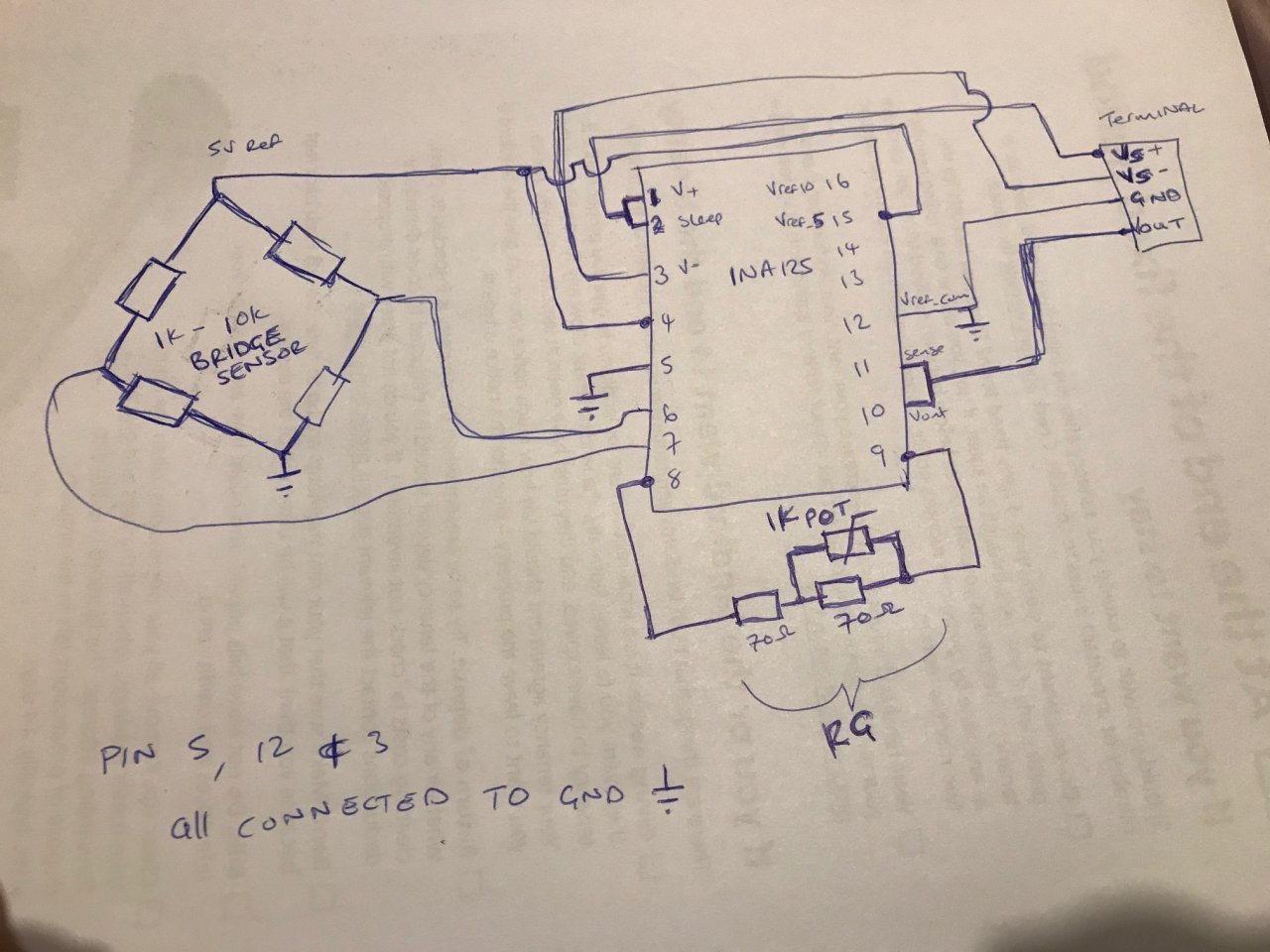Other Parts Discussed in Thread: LM7705
Hello.
I am using the Texas instruments INA125 chip for an analogue amplifier as I have shown on the attached image. INA125 data sheets says Nonelinearity -+0.002% of FS at Gain = 500
I am trying to use both the single and dual supply modes by connecting Vs- to ground or to a negative supply
The Dual supply operation seems to work fine (I have connected it almost identical to figure 1 of the INA125 data sheet) Its giving me an acceptable linear output 0.07% of FS for a gain of up to 4000.
The Problem is when I connect it in a Single Supply Mode (Figure 5 of the data) with V-,VrefCom and IAref all connected to ground. The linearity is way out of spec (I am getting 1-3% of FS) and I have a minimum output of around 65mV (even placing offset adjustment resistors I cannot go below this value in single supply mode).
I also measured IAref before connecting it to ground at it was = 2.5V. A bit like in figure 6 of the data sheet, but how is this possible if I did not connect IAref to Vref2.5. I have a feeling watever the problem is, it probably has something to do with this IAref, but I cannot seem to know why..please help!
My application is for a 0-10V output or 0-5V output. I am using minimum 7V input for the single supply 0-5V and 12V for 0-10V. The Maximum I am using is about 32V.
I do not have a load on the output, I connected a DMM +terminal to Vout and negative terminal to gnd.
I think the data sheet says when the load is referred to ground as shown (figure 5), the actual output voltage swing is limited to approximately 150mV above ground. Is this the reason why I am getting a minimum of 65mV instead of Zero only in single supply operation. Is this also why I am not getting good linearity?
If this is true, Is there a way around this other than maybe to have a 0.15V - 5.15V and a 0.15 to 10.15V output? It would really be great if I can have a 0-5V and 0-10V output, is there any other way around this if this is the problem?



